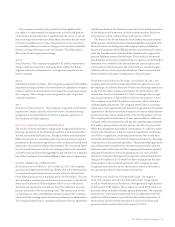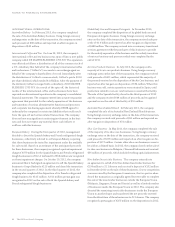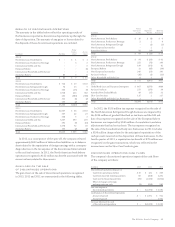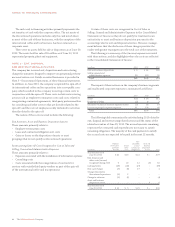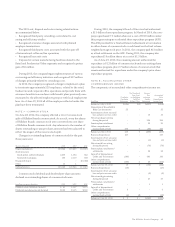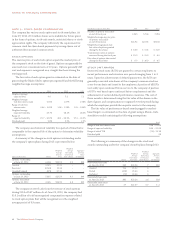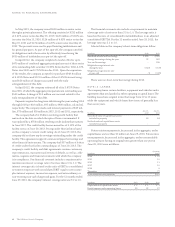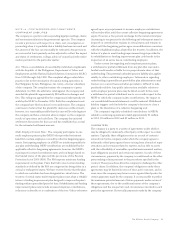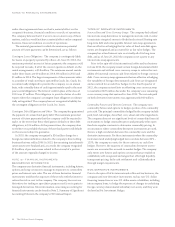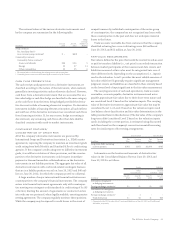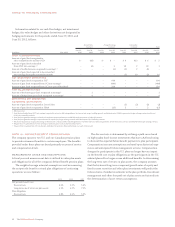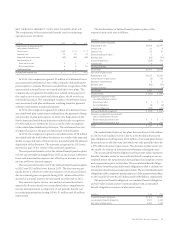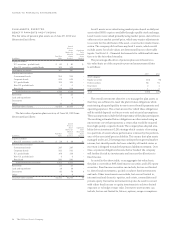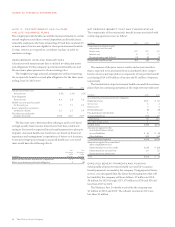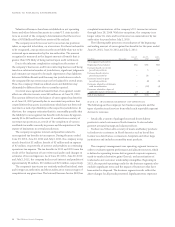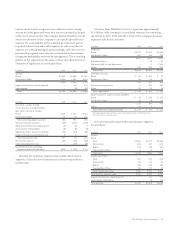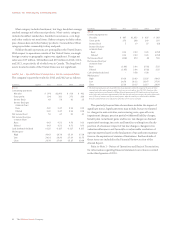Sara Lee 2013 Annual Report Download - page 52
Download and view the complete annual report
Please find page 52 of the 2013 Sara Lee annual report below. You can navigate through the pages in the report by either clicking on the pages listed below, or by using the keyword search tool below to find specific information within the annual report.50 The Hillshire Brands Company
NOTES TO FINANCIAL STATEMENTS
under these agreements have not had a material effect on the
company’s business, financial condition or results of operations.
The company believes that if it were to incur a loss in any of these
matters, such loss would not have a material effect on the company’s
business, financial condition or results of operations.
The material guarantees for which the maximum potential
amount of future payments can be determined, are as follows:
Contingent Lease Obligations The company is contingently liable
for leases on property operated by others. At June 29, 2013, the
maximum potential amount of future payments the company could
be required to make, if all of the current operators default on the
rental arrangements, is $18 million. The minimum annual rentals
under these leases are $9 million in 2014, $8 million in 2015 and
$1 million in 2016. The largest components of these amounts relate
to a number of retail store leases operated by Coach, Inc. Coach, Inc.
is contractually obligated to provide the company, on an annual
basis, with a standby letter of credit approximately equal to the next
year’s rental obligations. The letter of credit in place at the close of
2013 was $7 million. This obligation to provide a letter of credit
expires when the company’s contingent lease obligation is substan-
tially extinguished. The company has not recognized a liability for
the contingent obligation on the Coach, Inc. leases.
Contingent Debt Obligations and Other The company has guaranteed
the payment of certain third-party debt. The maximum potential
amount of future payments that the company could be required to
make, in the event that these third parties default on their debt
obligations, is $16 million. At the present time, the company does
not believe it is probable that any of these third parties will default
on the amount subject to guarantee.
In 2010, the company recognized a $26 million charge for a
foreign tax indemnification related to the company’s direct selling
business that was sold in 2006. In 2013, the remaining tax indemnifi-
cation issues were finalized and, as a result, the company recognized
$10 million of pre-tax income related to the reversal of a portion
of the amount originally charged to income.
NOTE 15 – FINANCIAL INSTRUMENTS
BACKGROUND INFORMATION
The company uses derivative financial instruments, including futures,
options and swap contracts to manage its exposures to commodity
prices and interest rate risks. The use of these derivative financial
instruments modifies the exposure of these risks with the intent to
reduce the risk or cost to the company. The company does not use
derivatives for trading or speculative purposes and is not a party to
leveraged derivatives. More information concerning accounting for
financial instruments can be found in Note 2, Summary of Significant
Accounting Policies in the company’s 2013 Annual Report.
TYPES OF DERIVATIVE INSTRUMENTS
Interest Rate and Cross Currency Swaps The company had utilized
interest rate swap derivatives to manage interest rate risk, in order
to maintain a targeted amount of both fixed-rate and floating-rate
long-term debt and notes payable. Interest rate swap agreements
that are effective at hedging the fair value of fixed-rate debt agree-
ments are designated and accounted for as fair value hedges. The
company has a fixed interest rate on virtually all of its long-term
debt, and as of June 29, 2013 the company is not a party to any
interest rate swap agreements.
Prior to the spin-off of its international coffee and tea business
in June 2012, the company issued certain foreign-denominated debt
instruments and utilized cross currency swaps to reduce the vari-
ability of functional currency cash flows related to foreign currency
debt. Cross currency swap agreements that are effective at hedging
the variability of foreign-denominated cash flows are designated
and accounted for as cash flow hedges. In the fourth quarter of
2012, the company entered into an offsetting cross currency swap
to neutralize €229 million due under the company’s one remaining
cross currency swap that matured in June 2013. The net cash paid
on both derivative instruments was approximately $40 million.
Commodity Futures and Options Contracts The company uses
commodity futures and options to hedge a portion of its commodity
price risk. The principal commodities hedged by the company include
pork, beef, natural gas, diesel fuel, corn, wheat and other ingredients.
The company does not use significant levels of commodity financial
instruments to hedge commodity prices and primarily relies upon
fixed rate supplier contracts to determine commodity pricing. In
circumstances where commodity-derivative instruments are used,
there is a high correlation between the commodity costs and the
derivative instruments. For those instruments where the commodity
instrument and underlying hedged item correlate between 80% –
125%, the company accounts for those contracts as cash flow
hedges. However, the majority of commodity derivative instru-
ments are accounted for as mark-to-market hedges. The company
only enters into futures and options contracts that are traded on
established, well-recognized exchanges that offer high liquidity,
transparent pricing, daily cash settlement and collateralization
through margin requirements.
NON-DERIVATIVE INSTRUMENTS
Prior to the spin-off of its international coffee and tea business, the
company used non-derivative instruments such as non-U.S. dollar
financing transactions or non-U.S. dollar assets or liabilities, including
intercompany loans, to hedge the exposure of changes in underlying
foreign currency denominated subsidiary net assets, and they were
declared as Net Investment Hedges.



